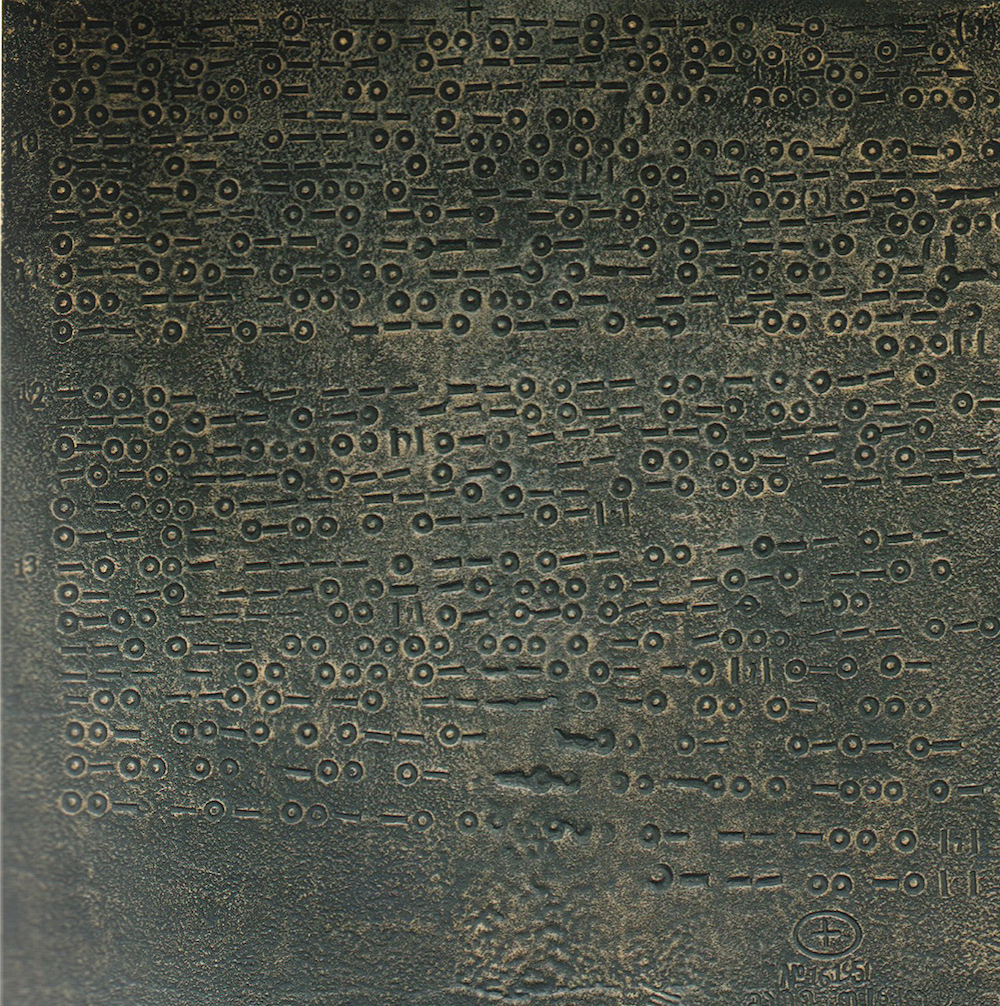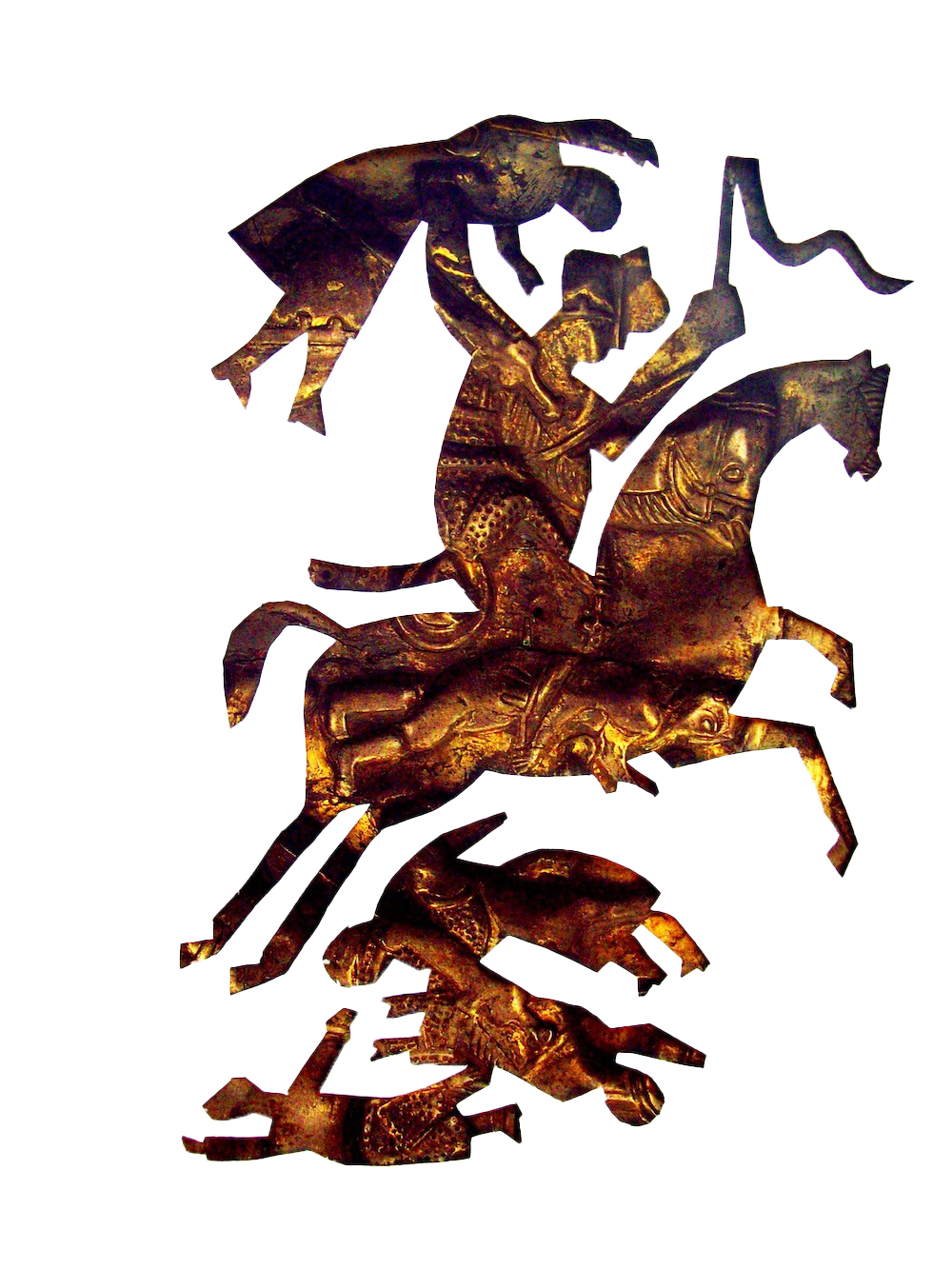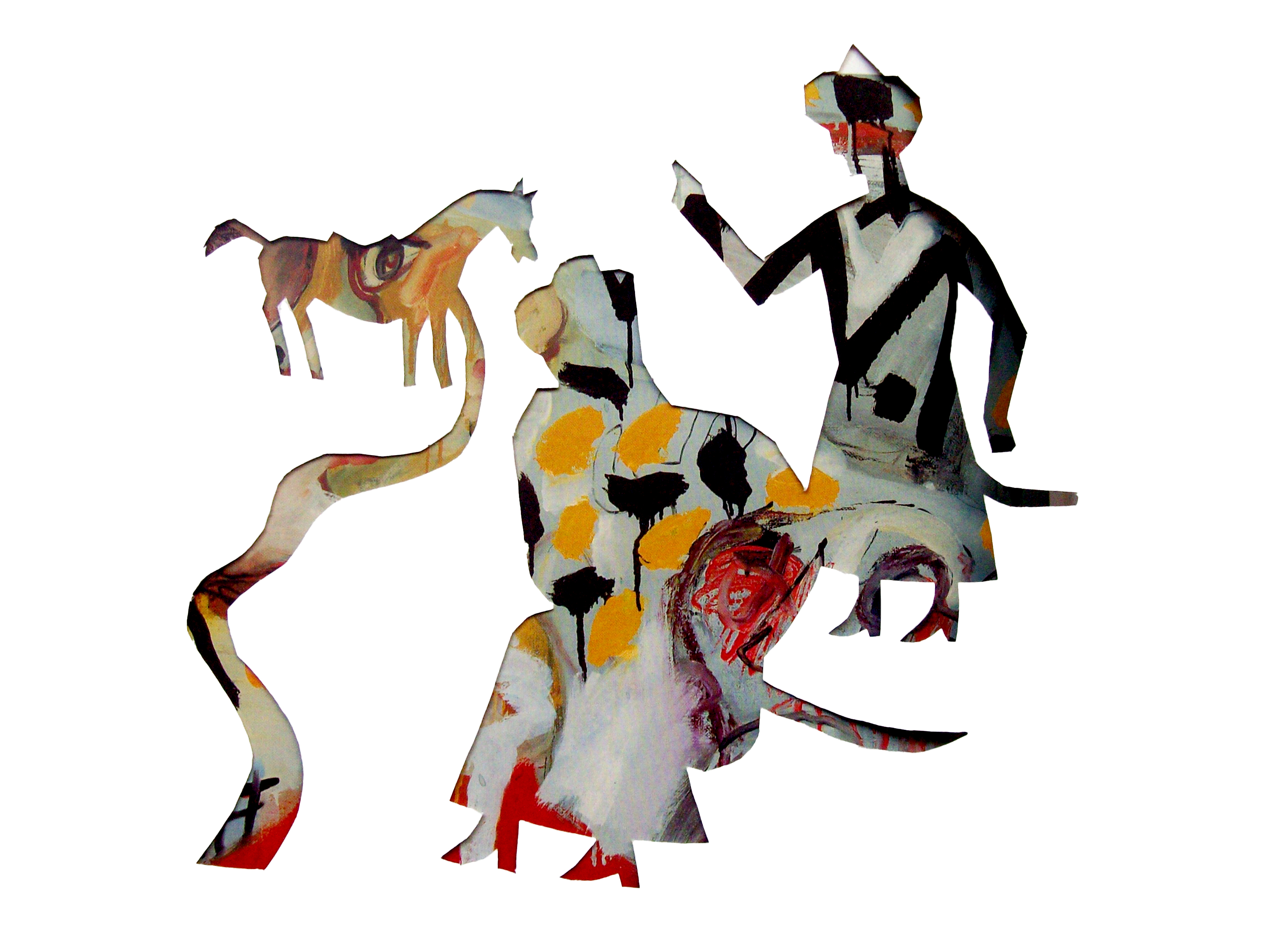
Feel free to add tags, names, dates or anything you are looking for


The Knight in the Panther's Skin — Artist's Book, featuring artworks by fifteen contemporary Georgian artists, was published back in 2015 and presented at the National Gallery in concurrence with an exhibition of the same works, which are now an official part of the Gallery’s permanent collection. One of the most extraordinary series from this collection was created by Temo Javakhishvili (Javakhi), who has kindly shared the story of its inception: “It all began with the author of this project inviting me to create ten scenes from The Knight in the Panther’s Skin — something I was initially convinced that I would refuse to do. My first reaction was to smile. I had certainly never thought about this before, and couldn’t possibly imagine working on the kind of text that already had an associated set of dogmas and established notions of how it would always be illustrated. However, once I realized that I was free to come up with my own independent interpretation, I agreed with pleasure to work on the project .”
Temo Javakhishvili (Javakhi). The Knight in the Panther's Skin — Artist's Book Series. 50x50. Mixed media. 2015
Temo Javakhishvili (Javakhi). The Knight in the Panther's Skin — Artist's Book Series. 50x50. Mixed media. 2015
The process of creating visual images that would complement the text of The Knight in the Panther’s Skin was certainly not the first experiment by Temo Javakhishvili. With his diverse oeuvre and consistently novel, artistic responses to local events, he is one of the most outstanding figures in the history of Georgian art. His creative biography encompasses works utilizing a wide range of media, including painting, graphic art, photography, text and image synthesis, performance art, video art, installations, and more. However, his name is predominantly associated with abstract art — abstract objects with textured finishes. These objects are “picture”-format pieces, inspired by architectural surfaces and produced through the accentuation of common textures (cement, annealed soil, rock powder, and a variety of other chemical powders used as ground primers) and treatment techniques (relief creases, glyphic silhouettes). Such pieces are certainly reminiscent of archetypal prehistoric images, such as trace fossils and other markings, accentuating classic script and alphabet themes. This very concept was the inspiration behind Temo Javakhi’s first ever solo show back in 1991, Letrism, the title of which alluded to his kinship with the legendary Modernist legacy and simultaneously conveyed his personal interpretation of the movement. Textural finishes with glyphic signs, individual letters, numbers, cartographic silhouettes and symbolic images come together as a sort of cryptic visual system, in which specific meaning is negligible and what matters is the narrative: its experiential and cognitive keys. Two of the most distinctive works in this regard are Descendants of Abraham’s and The Principal Prayer, where cryptic texts over a neutral background emerge as a symbolic representation of our cultural heritage and the history of mankind as a whole.

Temo Javakhishvili (Javakhi). Descendants of Abraham (1985). 80x80. Mixed media
Temo Javakhi’s performance, Bul-Bulioni (National Gallery, 1991), which was the artist’s response to the condition of utter neglect that the art realm was under at that time, conveyed the apparent communication gap through skillful synthesis of absurdity and irony in the form of a linguistic pun : right after completing his experimental poetry reading, he tore the texts into pieces and tossed them into a boiling broth with vegetables. Temo Javakhi’s oeuvre is an inseparable part of the ever-changing course of Georgian visual art, as well as the ongoing exchange of global contemporary art experiences and their eventual application with regard to a singular space. Temo Javakhi is a most distinguished artist, whose work has undoubtedly managed with remarkable subtlety to synthesize global experience with pressing issues in the realm of contemporary Georgian art.

Temo Javakhishvili (Javakhi). The Knight in the Panther's Skin — Artist's Book Series. 50x50. Mixed media. 2015
In light of the artist’s long-standing experience with interpreting the essence and meaning of calligraphy and the written word, The Knight in the Panther’s Skin — Artist’s Book, which was linked to a particular text and was to be both interpreted and illustrated in a variety of ways by some of the most reputable artists and professionals, posed a fresh challenge for Temo Javakhi.

Temo Javakhishvili (Javakhi). The Knight in the Panther's Skin — Artist's Book Series. 50x50. Mixed media. 2015

Temo Javakhishvili (Javakhi). The Knight in the Panther's Skin — Artist's Book Series. 50x50. Mixed media. 2015
In the words of the artist himself, the mirror background was certainly figurative — an allusion to multidimensional space, where time loses meaning and the reflection of each viewer creates a powerful bond between the present-day observer and the historical text. Each illustration depicts an encounter between protagonists of the poem, focusing primarily on expressive yet laconic scenes that feature two or three characters. Nevertheless, there are some works that portray the solitude of individual characters as well. In certain instances, the Knight is placed in a somewhat ethereal and figurative neutral space, or appears to be deep in thought, leaning against a wooden shaft.

Temo Javakhishvili (Javakhi). The Knight in the Panther's Skin — Artist's Book Series. 50x50. Mixed media. 2015

Temo Javakhishvili (Javakhi). The Knight in the Panther's Skin — Artist's Book Series. 50x50. Mixed media. 2015
Temo Javakhishvili (Javakhi). The Knight in the Panther's Skin — Artist's Book Series. 50x50. Mixed media. 2015
In terms of its style, this series bears an uncanny resemblance to miniatures from the 17th-century manuscript, and the bold and expressive oriental-themed silhouettes by Mamuka Tavaqalashvili. Several works from the series are enhanced with quotes inscribed in Mkhedruli -type script, and form truly unusual images in conjunction with the collage-style structure and fluctuating figures reflected in the mirror. This series is arguably one of the most outstanding creations in the history of text-image relations, proposing an unprecedented interpretation of the original text from a distinctive Pop Art and Arte Povera perspective.